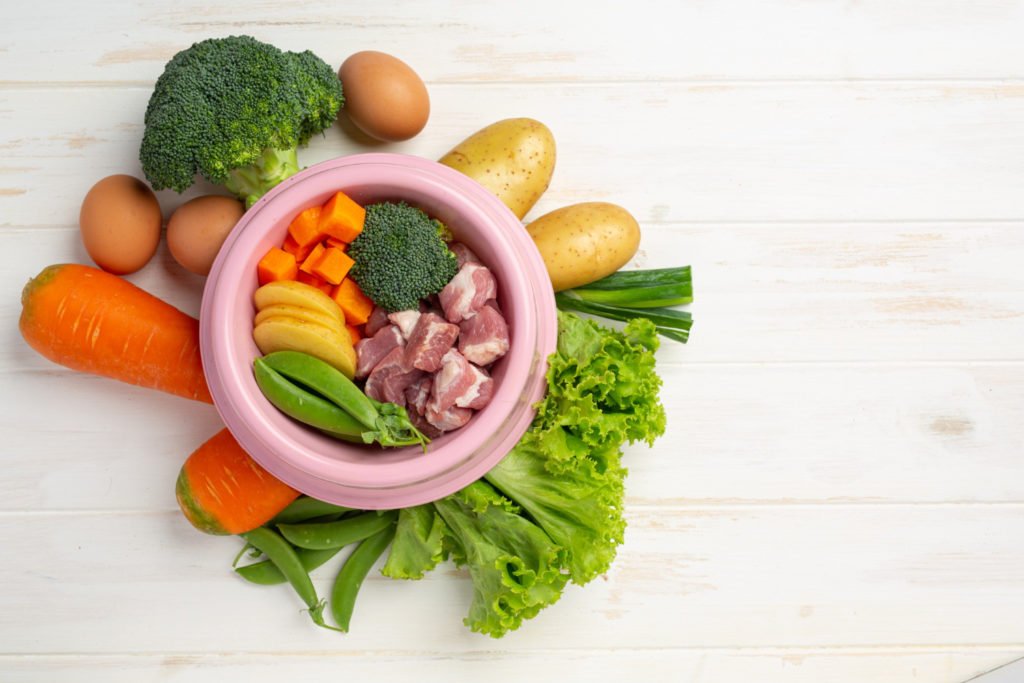Should You Reward Your Pooch With Vegetables?
Surveys conducted as early as 2007 by the Association for Pet Obesity Prevention (APOP) revealed that 46% of dogs are obese or overweight and this figure jumped to 56% by 2018. Being overweight or obese affects the lifespan and quality of life of animals.
In addition to possible health problems such as osteoarthritis and cancer, your beloved pooch can also develop behavior problems. One way to manage your dog’s weight is to swap classic dog treats for vegetables. Raw or cooked veggies are good sources of iron, antioxidants, and fiber for a healthy and well-balanced diet.
Also Read This: Healthy Dog Food for Your Dog’s Digestion
Vegetables as Treats

Preventing overweight and obesity in your dog is essential for their overall health and wellbeing. Hence, it is vital to consult a vet to determine the appropriate type and amount of food for your pet’s breed, age, and activity level.
In addition, experts at Ziwi recommend using a high-quality commercial food that meets their nutritional needs. Avoiding excessive treats, table scraps, and human food can also contribute to a balanced diet and desirable weight.
Using low-calorie vegetables as treats can help maintain a good weight and prevent obesity. Although canine animals can eat most vegetables, there are some that are better choices than others according to a canine nutritionist from the University of Liverpool.
For example, carrots are crunchy treats that can also act as dental sticks to clean and remove food from their teeth. However, they are four times higher in calories than courgettes or zucchini according to the British Small Animal Veterinary Association (BSAVA).
Thus, courgettes are a better option with their high water content and very low calories. ‘Green, watery, vegetables such as watermelon, broccoli, cucumber, cauliflower, and Brussels sprouts’ are also possible choices.
Broccoli is laden with important vitamins – C and K. It helps boost the immune system and promote bone density. Celery is another crunchy and healthy snack for your pooch which also helps in freshening up their breath.
High in water content, but low in fat and cholesterol, celery is an excellent treat that is also a source of fiber and important minerals such as folate, potassium, and manganese.
Also Read More About: Everyday Tips To Keep Your Furry Buddy Happy
Ways to Add Veggies to Diets

Commercial dog food contains balanced amounts of proteins, fats, vitamins, and minerals. Beets, cauliflower, carrots, corn, and green beans are common veggies found in dog food. On top of giving veggies as treats, you can also include them in your pet’s diet to provide additional nutrients and variety.
Note that excessive vegetable consumption can lead to nutritional imbalances. Hence, 90% of dogs’ diets must come from regular food according to a veterinary medical advisor for Rover, a pet services pet.
Furthermore, valuable vitamins and minerals may be altered when you cook vegetables. Hence, raw veggies are often best for your pet. However, uncooked veggies can often become a problem for dogs to digest. As a solution, chopped veggies may be mixed in their regular food.
Fresh vegetables can also be put in the food processor so that they are easier to eat and at the same time, preserve their valuable nutrients. Pet parents can also cook, blanch, or steam vegetables to soften them and make them easier to chew and swallow.
Substituting vegetables as traditional treats and adding veggies to their regular food can help your pooch maintain a healthy weight. Veggies may also prevent obesity which can cause health problems and affect overall wellbeing and quality of life.





